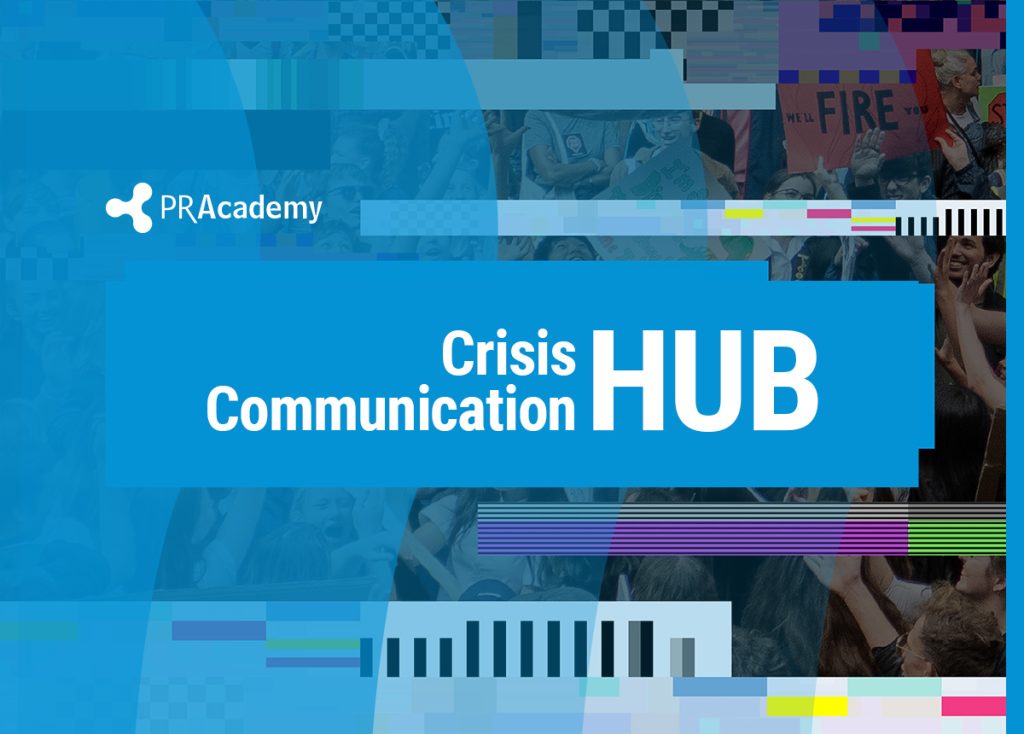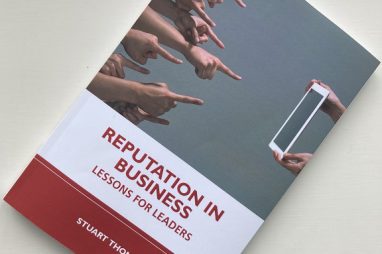Review of our 2022 crisis communication webinar series

About the author
Ann is a co-founder of PR Academy. Her special areas of interest are internal communication, change management and project communication. MSc, Dip CAM, MCIPR

As our 2022 Crisis Communication Hub webinar series comes to a close its a good time to look back at the topics we covered and some of the key crisis comms take-aways.
1. When a crisis becomes a battlefield of opinion: finding the balance between facts and emotion
Our first session with Andrew Griffin was all about the context that organisations are operating in today. Webinar host Chris Tucker, our CIPR Crisis Communication Diploma course leader summed it up as being about ‘how you solve crisis when there is no agreed objective truth’.
Andrew and Chris discussed the increasing polarisation of society, which has been exacerbated by social media and of course is not new to us. Neither is the blurring of lines between fact and opinion and the eroding of trust in traditional figures of authority. But all have certainly deepened over recent years. These trends require a re-evaluation of our traditional crisis communication response.
As Chris explained in her summary of the session, with a crisis we focus our communications around getting the truth out there. We try to put the crisis into perspective – it happens one in every million times – or whatever the figure is. We might try to communicate some context, that our record on these issues is a good one.
However, these crisis communication approaches are made difficult if no one can agree on the truth. As Andrew pointed out phrases such as ‘My truth’ and ‘Lived experience’ were not heard 20 or even 10 years ago.
The answer to communication in these times won’t be found in any crisis manual said Andrew – its more of a mindset. Our crisis response should accept and even embrace the emotion but never at the expense of the facts. We still need to prove what we are saying whilst maintaining that balance and empathy.
Never see the emotion as ‘wrong’, never see the facts as the silver bullet.
Webinar replay
2. Handling the media in a crisis
We welcomed journalist Simon Read for a session on handling the media in a crisis. Simon, emphasised the importance of trust, honesty and talked about what journalists are looking for when a crisis hits.
Simon and host Chris shared an example of Michael O’Leary of Ryanair being caught off guard by a journalist – it was a masterclass in keeping cool, managing the journalist’s expectations and demonstrating the he was ‘getting on with the job’ of fixing the problems the airline was experiencing.
Webinar replay
3. Handling social media in a crisis
Media of a different type was the focus of our session with Kate Hartley, co-founder of crisis simulator, Polpeo and author of Crisis Communication Strategies and social media expert Paul Sutton.
This was our most popular session with 1000 registrations. As host Chris says, in crisis communication we used to talk about the ‘golden hour’ as being the time we had to devise our initial response to a crisis nowadays we are lucky if we get 15 minutes. In fact, 15 minutes is often said to be the time to aim for to get that first response out.
Preparation was a key theme of the session. It is critical to have identified the risks your organisation is running and to then walk that through in terms of what might happen next when this risk becomes manifest and then actually tips into a crisis. What might this crisis look like as it spilled over into social media? This enables you to put together at least the bare bones of a strategy in terms of when you engage and what you might say.
Another theme which many were interested in was tone of voice. Many organisations have worked to establish an online personality that is humorous or playful – Yorkshire Tea is an example often pointed to. But how does this play out in a crisis? Practice social media responses to crises that are true to your online brand personality but also respectful of what has happened and the concern your stakeholders may well feel about the situation.
Make sure you do a communications audit, so you are aware of all the social media accounts your organisation has – even those that are no longer used. It is often the case that larger organisations run several different accounts perhaps for different departments or even to front campaigns. Don’t be surprised if in a crisis all these accounts erupt into activity as those wanting to comment on the crisis or perhaps are genuinely searching for information use whatever way is open to them to reach you.
As one of the attendees pointed out we are all aware of the possibility that social media is the first place you actually hear about a crisis. This is where it is worth making sure you have in place some sort of social listening tool. It could give you that heads up something is afoot.
Webinar replay
4. Internal communication in a crisis
Employees can be overlooked in crisis communication planning. As Dr Kevin Ruck of PR Academy who ran the session explained – an attack on our employer can feel like an attack on ourselves as often work is an important part of how we see ourselves. A feeling of helplessness in a crisis situation can undermine an employee’s very identity.
Kevin said: ‘A crisis threatens their sense of belonging and identity, it creates uncertainty and confusion.’ Employees will first need some sort of reassurance which means the visibility and accessibility to them of the leadership team is very important.
Crisis communicators talk about the importance of instructing and adjusting messaging when developing a crisis narrative. The former is designed to answer the question stakeholders have around what do I need to do because of the crisis – in a product recall what the exact product is that is impacted and what do I need to do with it?
For internal communication in a crisis there is perhaps a need for a new style of leadership where leaders make a point of incorporating ongoing conversations with employees in effect co-creating the narrative. Kevin highlighted a recent interview with Sharon White, the chairman of John Lewis, when she said she saw her role being one of ‘nudge and facilitation of conversations’ as she leads the company through its recovery from the impact of the pandemic.
There is mounting evidence that employees are a trusted source of information for other stakeholders – particularly in a crisis. Employees are both receiver and communicator so getting the internal crisis communication right is key.
Webinar replay
Join the Crisis Communication Hub
Sign up to our crisis communication hub to be the first to hear about our 2023 series of webinars – we have some great topics planned!


